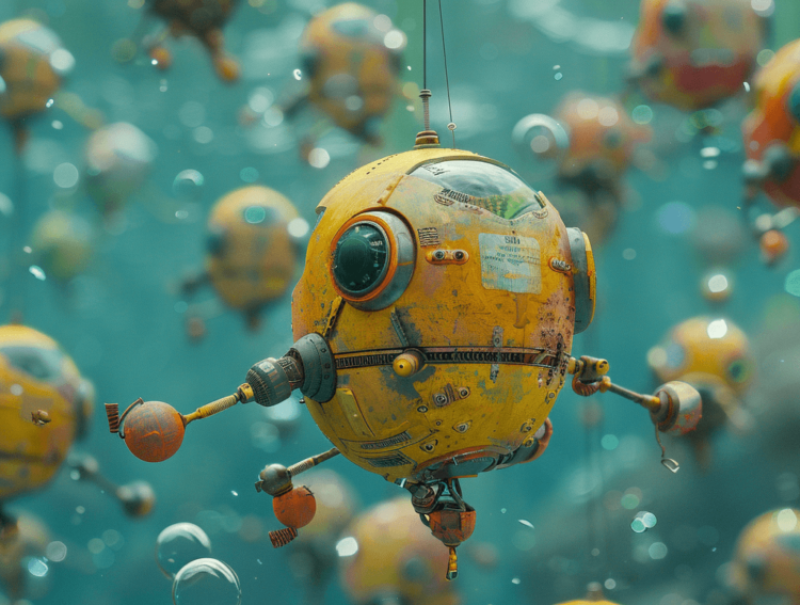Tiny robots that swim through our blood to deliver drugs or hunt down pathogens have been a staple of science fiction for decades. Although still distant, that vision is a step closer to reality now that electrical engineers have unveiled swimming microrobots smaller than grains of sand with enough computing power to perform a simple task on their own—rather than being constantly guided by external signals.
“It’s awesome,” says Daniel Goldman, a physicist at the Georgia Institute of Technology who specializes in larger robots that mimic animals.
The little gizmos swim in a solution of dilute hydrogen peroxide in a shallow dish on the stage of a microscope. Instead of flippers, a robot has an electrode on each corner. Setting the two electrodes on any side of the robot to different voltages produces an electric field pointing from one electrode to the other. The field pushes the slightly ionic fluid one way and propels the robot in the opposite direction, toward the higher voltage electrode. By varying the voltages on the electrodes, researchers can make the robot move forward or backward, slide sideways, turn, or even twirl. What’s more, shorn of delicate limbs, the robots keep swimming for up to 6 months.































